While selecting your house flooring, homeowners typically choose marble for their homes. Many flooring types are available; some are known, and others are not. Depending upon choices, requirements, durability, and aesthetics, every floor has its advantage. Flooring types and flooring varieties also depend on pricing requirements.
This article will explore the various types of flooring available and the materials to get the best floor system for your house. Flooring materials are essential for several reasons, including the comfort and health of the people who use the room, the appearance of the room, and the ability to clean the space easily.
Let us first look at the types of flooring materials available in the market.
Types of Flooring materials available
There are a variety of flooring materials available; each has its advantages.
1. Wood flooring: Wood flooring is popular because it is durable, easy to care for, and looks beautiful when managed correctly. It has natural look and feels that many people find appealing, and it can be easily refinished or replaced if needed. Wood floors are a popular choice for rooms used for more formal purposes, such as offices or apartments. Hardwood floors are sturdy and attractive, and they can be easily cleaned using a vacuum cleaner or a mop and bucket.
2. Laminate flooring: Laminate flooring is a hybrid flooring material that combines the durability and appearance of wood with the convenience and ease of cleaning carpet. It comes in various colors and styles and is relatively affordable compared to other flooring types.
There are a number of advantages to using laminate flooring material, including the following:
1. Laminate flooring is a cost-effective option used in various settings, from homes and offices to schools and hospitals.
2. Laminate flooring is easy to care for – just sweep it clean, mop it dry, and vacuum it regularly.
3. Laminate flooring is resistant to moisture and humidity – meaning that it will not corrode or deteriorate over time.
4. Laminate flooring is easy to install – just lay it down, add the finishing touches (carpet, tiles, rugs, etc.), and you’re ready to go.
5. Laminate flooring is versatile – you can use it in traditional and contemporary designs.
6. Laminate flooring is durable – it will withstand wear and tear over a long time, making it a good choice for frequently used or trafficked areas.
3. Carpet: Carpet is a popular choice for many reasons – it is comfortable to walk on, easy to clean, and versatile enough to be used in many different settings. It can be modified to fit any style or budget and last several years if properly maintained. Carpet is a versatile flooring material used in rooms used mainly for domestic purposes, such as living rooms, bedrooms, and kitchens. It can be cleaned easily using a vacuum cleaner, broom, and dustpan.
There are many benefits to carpet flooring material, including the following:
1. Carpet flooring is a popular choice for homes and offices because it is soft and comfortable to walk on, making it ideal for indoor and outdoor use.
2. Carpet flooring is fire-resistant and resistant to mold and other fungi, making it a safe choice for areas where people spend a lot of time.
3. Carpet flooring is easy to clean, which makes it a good choice for areas where dirt and other debris may accumulate.
4. Carpet flooring is versatile and can be used in various settings – from indoors to outdoors, in commercial spaces in residential homes.
5. Carpet flooring is affordable, making it affordable compared to other flooring options such as vinyl or tile.
4. Tile: Tile is famous for floors because it is beautiful and durable. It comes in various styles and colors and can be installed in minutes using essential tools and skills. The tile is also relatively resistant to scratches and other damage, making it a good choice for areas where durability is critical. Tiles are versatile flooring materials that can be used indoors and outdoors. They offer a unique look and feel that is both stylish and stylish, making them ideal for high-traffic areas or places where durability is a priority.
Some of the benefits of using tiled flooring include the following:
• Tiled flooring is easy to clean and maintain.
• Tiled flooring is resistant to moisture and mold.
• Tiled flooring is easy to install and can be done in various shapes and sizes.
• Tiled flooring is durable and lasts longer than other flooring materials.
5. Linoleum: Linoleum is a low-pile flooring material often used in bathrooms and other areas where moisture may be an issue. Linoleum is easy to clean but may not be as durable as other flooring materials. Linoleum flooring is a popular choice because it is affordable and durable. Linoleum is made from natural linseed oil and other resins, which makes it resistant to moisture and scratches. It also has a low VOC (Volatile Organic Compound) content, which makes it environmentally friendly. Linoleum is available in various colors and patterns, making it suitable for various applications.
Type of Flooring for Kitchen
There is no definitive answer to this question, as different types of flooring are suited to other kinds of kitchens. The type of flooring that is best for a kitchen will vary depending on the specific needs and preferences of the owner. Some popular kinds of flooring for kitchen applications include:
Ceramic tile: It is a popular choice for kitchen floors because it is durable and highly resistant to wear and tear. It also has a beautiful sheen and looks great in any kitchen.
Wood flooring: Wood flooring is a traditional option for kitchen floors, as it is durable and beautiful. It can be refinished or replaced several times over its lifetime, and it is often stained or waxed to give it a natural look and feel.
Linoleum or vinyl flooring: Linoleum or vinyl flooring is a low- maintenance option that is good for kitchens with frequent traffic. It can be cleaned with a vacuum cleaner and a mild cleaner and is also resistant to water damage.
Flooring in a kitchen can provide several benefits, including:
• -Warm and comfortable floors those are easy to clean.
• -Floors those are durable and resistant to wear and tear.
• -Floorings that can absorb moisture and moisture-caused problems, such as mold and mildew.
• -Flooring that provides a sound sleeping environment.
• -Flooring that is easy to decorate or change to match your style.
Type of Flooring for Bedroom
There is no definitive answer to this question, as the type of flooring best suited for a bedroom depends on a variety of factors, including the size, shape, and color of the room, the style of the furniture, and the overall aesthetic of the home. Some possible types of flooring that may be suitable for a bedroom include:
1. Wood flooring: Wood flooring is a popular choice for bedrooms because it is versatile and can be adapted to many different styles and colors. It also has a natural look and feels that many people find appealing. Hardwood floors are a popular choice for bedroom floors because they are beautiful and luxurious, but they also offer a lot of durability and stability. They can withstand heavy foot traffic and rough treatment, making them a good choice for families with children prone to accidents.
2. Tile Flooring: Tile flooring is often considered more high-end than other types of flooring, and it can be used in both traditional and contemporary bedrooms. It is easy to keep clean and requires minimal maintenance. Tiled floors are a popular choice for bedrooms because they are easy to clean and look great, but they also tend to be less expensive than other flooring options.
3. Carpet: A carpet is a low-maintenance option used in both traditional and contemporary bedrooms. It can add comfort and texture to the room, and it can sometimes be more accessible to clean than other types of flooring. Carpets are often the most popular option for bedroom floors because they are durable and easy to care for. They are also easy to clean and maintain, which is essential given the high traffic levels in a bedroom.
4. Hardwood flooring: Hardwood flooring is a luxurious option that is usually less expensive than other types of flooring. It has classic look and feels that some people find appealing, and it can last longer than different types of flooring if care is taken with its care and maintenance.
There are several reasons why flooring in a bedroom can be a good choice.
• For one, it can add value and style to the room. Flooring in a bedroom can also help to reduce noise and vibrations, which can make it easier to sleep peacefully.
• Additionally, bedroom flooring can help protect the floors from moisture and debris, keeping the room clean and free from harmful bacteria. If you want flooring in a bedroom that will provide all of these benefits, consider options such as carpeting or hardwood floors.
• Flooring in a bedroom can provide many other benefits, including adding comfort and style to the space, reducing noise and moisture levels, and providing a safe environment for children.
• Other materials like Linoleum are durable and easy to clean, making it a good choice for areas with frequent foot traffic or spills.
Type of Flooring for Bathroom
Various types of flooring can be used in a bathroom, including vinyl, ceramic, and hardwood. Each has its benefits and drawbacks, so choosing the type of flooring best suits the room’s needs are essential.
Vinyl flooring is typically affordable and easy to clean, but it may need to be more durable and waterproof. Ceramic flooring is durable and water-resistant, but it may be challenging to keep clean. Hardwood flooring is expensive and difficult to clean, but it is often considered the best option for high-traffic areas like bathrooms. It is also often considered to be the most aesthetically pleasing option. Choosing the right type of flooring for the specific space and bathroom needs is essential, as different types have additional benefits and drawbacks.
• Tiled bathrooms are often favored because they are easy to clean and maintain. They also look professional and are suitable for use in any house room. However, tile can be challenging to walk on in wet or icy conditions, and it may not be ideal for areas where heavy traffic is expected, such as the hallway or the bathroom itself.
• Wooden floors are popular for bathrooms because they are solid and durable. They also add warmth and comfort to the space, making them ideal for cold climates. However, wooden floors can be challenging to clean and require regular maintenance, especially if they are exposed to moisture or rain.
• Carpeted bathrooms are popular because they provide a luxurious feel and are easy to care for. However, carpets can be noisy when walked on and can become stained over time. They also tend to trap moisture and bacteria, which can lead to unpleasant smells.
• Vinyl flooring is a relatively new option for bathroom floors, but it has many advantages over other types of flooring. Vinyl floors are easy to clean and resistant to moisture and water damage.
Flooring in a bathroom can provide several benefits, including:
• It can help to keep the floor clean and free from debris and mud.
• It can provide a smooth, dry surface on which to walk or stand, which is essential for preventing slips and falls.
• It can add comfort and convenience to the bathroom by reducing noise and providing a place to sit or lie down.
• It can increase the bathroom’s overall aesthetic appeal by making it look more polished and professional.
• It can make the bathroom more habitable and comfortable, especially if it is difficult to walk on slippery or wet surfaces.
• It can help to keep the bathroom clean and free from water droplets and other messes.
• It can provide a stylish and trendy look that will match the rest of the home.
• It can make it easier to move around in the bathroom when necessary.
• It can help to reduce noise levels in the bathroom, making it more peaceful and quiet.
• It can add extra insulation to the room, which is beneficial in cold environments.
Flooring is one of the essential elements of any home, and it serves as a foundation for the rest of the furniture and plays a vital role in determining the impression your home will make. This blog explored the different types of flooring available and discussed their benefits and drawbacks. It’s important to ensure that you choose the right type of flooring for your room. We hope this will help you decide which flooring suits your specific needs.

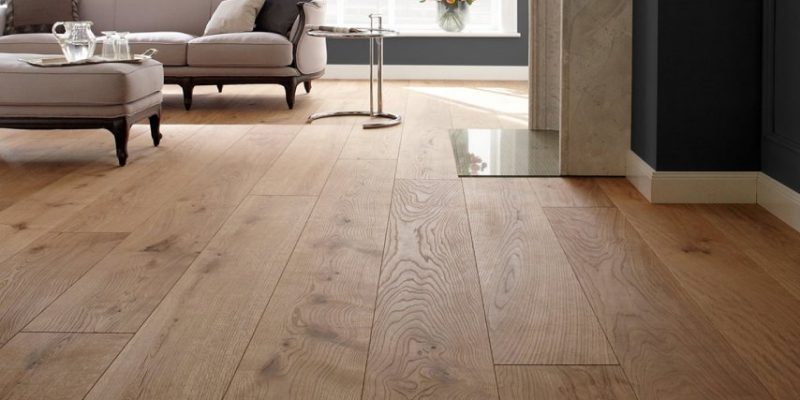

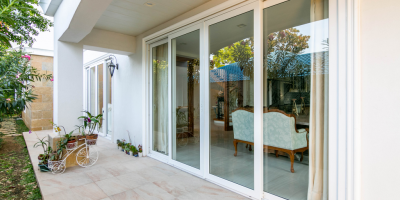


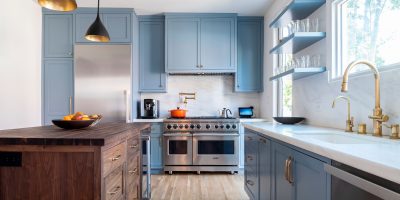


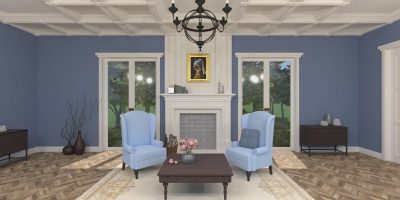


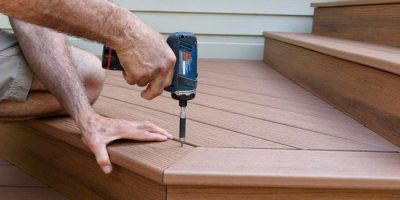
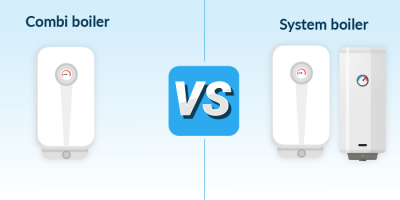
Comments